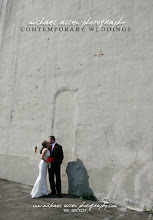Fast forward to my next generation of photography, working with 35mm film with my first Canon EOS-1 and the sky was the limit. Back then I was shooting a 36 roll of slide film, wow that was a big step from a 12 pack of film. Shooting slide film was a requirement of the magazine editors at the time, they would take our film submissions, then convert the slides to a medium format positive film for printing. I would spend anywhere from $500 to $800 for a typical photo shoot ending up with 100 slides, duplicates, conversions and prints. The days of film shooting was hard work, and expensive. Imagine shooting all day long, and having to wait until the film lab processed the slides to see how my exposures turned out! Most of the time I nailed the exposure, but there was always that suspense of wondering if all the hard work of an all day long photo shoot would actually turn out. Here's a scan of slides of my lovely model (aka my wife Janice) to give you an idea of my old workflow.
Then there was this giant leap of digital technology. Gone were the days of $800 processing fees, now I can instantly see my exposures, adjust sharpness and color schemes right in the camera. The world of professional digital photography completely changed the world of photography. Magazine submissions went from weeks to minutes, and the ability to process and edit images in desktop computers made my role as a photographer become more of an artist. It was like being untangled from all the rolls of film, being released to experiment with creativity, color grading, reframing, it was life changing for me as a photographer.
As the digital revolution continued, cameras got better and better, lenses got sharper, and the ability to upgrade to better gear each year was an adventure. Camera companies competing to made cameras better and easier to use made my life much easier. Digital cameras evolved from the early days of shutter lag to shooting 8 frames per second. ISO ranges increased dramatically, which in turn made shooting in low light a joy. Emulating the look of film with software gives my images just the right look for my goals as a professional photographer. The world of digital photography is simply amazing.
A typical photo shoot for me today yields anywhere from 1000 to 5000 images, my workflow takes those images into culling and editing to deliver 500 to 1000 images to my editors. I can shoot tethered with Wifi to a computer screen to help my clients see real time what is being accomplished in the studio. Now instead of waiting on the lab to develop my film, and waiting weeks to send in submissions, its like flying on a lear jet to reach my destination in a matter of hours. Speaking of jets, the fashion images below just happened to be shot on the tarmac, and narrowing down my favorites in my computer was a breeze.
Whats next in the world of photography? Cameras are becoming more and more evolved each day, the early days of 12 megapixel images has soared to 20 - 30 megapixels and beyond. The sensitivity of the image sensor has surpassed the days of film cameras. The latest evolution comes from a new camera technology called Light. They have created a small lightweight camera with multiple lenses, advanced low light abilities, and its so compact you can slide it in your pocket. It's turning heads in the professional photography world. I can't wait to try one out and take in on location to one of our fashion shoots. Its a perfect tool for social media and press. Welcome to a new world of digital cameras. I can't wait to see what happens over the next few years!



















